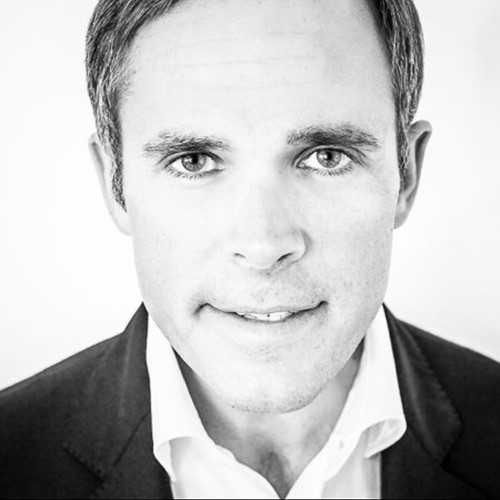Back to Basics or Brave New World?

The recent Gartner CMO survey put brand strategy back on top of marketers' agendas. But, as Richard Monturo founder and chief strategist of Monturo Marketing discovered, it’s still a little too soon to be celebrating.
Recently, Gartner published their annual CMO Spend Survey 2020, the first since the Covid-19 worldwide pandemic and the US and international protests, driven by the Black Lives Matter social movement, each put a stop to ‘business as usual’ for marketing and brands. Many marketers saw activity first come to a standstill, then shift online where it could, and then face an urgent reckoning on the responsibilities of companies and brands to the public. With this confluence of ‘rethink everything’ factors, the CMO question wasn’t just spend or freeze, but what really matters now?
A data point that sparked much online discussion wasn’t spending, predictably shown to have stopped and restarted cautiously. It was the ‘worst to first’ jump of brand strategy over analytics and technology as a top 3 strategic priority for managing future risk. Anyone with ‘brand’ in their business or job title was energised by such news, as many companies indeed used this moment to revisit their brand and what it’s doing for their business.
But it may not be the ‘brand’ it once was. Are companies turning off their analytics and technology machines to rethink brand positioning, tweak identities, and roll out new brand campaigns? Exactly how did these CMOs define ‘brand strategy’. And is this a temporary refocus or a sign of a more permanent, post-Digital rethink of the role of brand in a business?
Many marketing directors, myself included, have seen brand strategy pivot from external and creative to internal and operational. Directors from B2B and tech companies have reported spending as much as 70% of time on embedding brand thinking inside the company: into products, services, and culture outside the marketing department, from the Board to line workers. Before agencies and brand consultancies pull out their pitch decks, this newfound brand focus is more likely to start with how the company operates than with new external messaging, design, or creative.
Secondly, data has become marketers’ biggest friend and foe, as analytics proliferation has generated oceans of performance metrics, when executive management is asking for fewer marketing and brand KPIs that correlate to business performance. The brand KPIs that predict performance remain operational and behavioural: internal buy-in, on-brand products and services, brand consistency across platforms, and early-journey audience measures like opinion and preference. It comes from within.
Digging deeper into the Gartner report, one can see secondary data points indicating it might not be brand versus analytics and technology but brand PLUS analytics and technology – with brand as a performance accelerator.
Next to brand strategy in the ranking was operations, scenario planning, content, campaigns, digital commerce and UX. Creative and advertising remained at the bottom, suggesting a definition for ‘content’ and ‘campaigns’ that doesn’t lead with brand advertising.
Similarly, within brand strategy, the primary drivers were overall brand health and competitive benchmarking over awareness: i.e., is our brand driving performance better than the competition?
And the KPI priorities still have performance analytics on top: ROI, Leads, Conversions, Share, and Customer Satisfaction again making Brand a performance marketing driver with a ‘back to basics’ refocus on retention and loyalty.
Finally, the marketing mix trend remains led by Digital, Social, Web, SEO, and Mobile, with those increasingly coming in-house: reported by 32% of CMOs, of which 44% mentioned content for brand consistency.
So yes, it’s brand strategy back in front. But after years of either/or brand versus performance, we are starting to see a convergence, where brand is a guiderail and accelerator. What Gartner couldn’t cover in a survey are questions about why this happened, and whether it’s a temporary response or a more permanent shift.
“Everyone has a plan until they get punched in the mouth” – Mike Tyson
The last half year has been a massive hit to the status quo, and marketers from different industries were quick to point out that for them, these big cultural ruptures of the day were the catalyst that shifted brand back into the top spot.
Allyson Witherspoon, VP Marketing Communications and Media at Nissan North America, suggests a more comprehensive view of brand, inside and outside the organization that was sparked by COVID-19. It wasn’t a kneejerk reaction as much as a systematic response:

Allyson Witherspoon
VP Marketing Communications and Media
Nissan North America
“It’s exactly the approach we took here, which was to use the shift in market dynamics and consumer behaviour to focus on brand strategy soup to nuts. The automotive industry shut down overnight due to COVID-19, so it became clear to us that brand needed to be prioritized in the middle of the crisis and well into the recovery phases.
A key difference for me from the past is that ‘brand strategy’ has a much broader definition now – far from just communication and creative, and now about how a clear and executable strategy can guide companies during good times of prosperity, product launches, etc., but especially during tough times in crisis management, reputation recovery, employee motivation, etc.
At Nissan we focused on rebuilding this brand foundation during COVID-19 so we had the right levers in place to guide decision-making and deliver on profitability and ROI as the market started to return.”
Allyson works with a broad internal landscape brand strategy has to cover in automotive, and importantly, how to use good and bad timing on the marketing calendar to plan and adapt. Roll with the punches.
Kim Wijkstrom, SVP/Chief Marketing Officer at Vanda Pharmaceuticals in Washington, DC., believes the Gartner data points to the evergreen values of Brand Strategy.

Kim Wijkstrom
SVP/Chief Marketing Officer
Vanda Pharmaceuticals, Washington, DC
“I'm always heartened when ‘brand’ comes back in vogue - even though I believe that the notion of it being ‘out of vogue’ implies marketing myopia. Brand is the fundamental building block, the DNA, in the vast majority of marketing scenarios. Everything else consists of activities that flow from brand strategy. Unless the definition has changed in contextual ways I may have missed, it’s now returning to its original meaning and significance.
Marketing had been looking for silver bullets to solve for mature markets and anemic growth, digital in particular: delivery platforms, CRM, programmatic media, ecommerce. But these are tactical, efficiency-seeking solutions for incremental improvements. Everyone has equal access to these, so strategic advantage is nullified. Brand remains the strategic asset that is the marketer’s (and company's) ownable differentiator; it can't be copied, leased or sold.
Why the "return" to brand now? Marketers have had some time to look in the mirror, but I believe it goes deeper. We have been confronted with massive, existential convulsions in culture: both with COVID-19 (and the response to it) and the BLM protests. These raised deeper questions about corporate and brand behaviour, and forced many companies to reckon with issues they may otherwise have avoided or dismissed. Plus, most institutional investors, even before Covid, imposed ESG requirements on companies, which pushes Boards to examine corporate reputation and brand more directly.
When the questions become existential, one goes back to the fundamentals, which in marketing translates to brand and brand strategy. I remain optimistic and as committed and engaged to brand as ever to help lead my company into the post-COVID future.”
So for Kim, brand strategy should have been top priority all along, while utilizing the technology and platforms at one’s disposal, and understanding it’s role alongside corporate reputation.
Anders Tylman-Mikiewicz is Chief Product Officer at MGM Resorts International in Las Vegas. The travel industry has been particularly challenged in the COVID-19 pandemic, but he thinks a lot of this was coming already, and necessary:

Anders Tylman-Mikiewicz
Chief Product Officer
MGM Resorts International, Las Vegas
“I think we are in a moment of unique clarity. Brand Strategy now sits at the very top at ours and many other companies for a few reasons:
We were all getting a bit fat and unfocused. The global pandemic and social justice reaction were at the end of a record 12-year US bull run. For many companies resulted in too broad strategies, inflated ad prices (especially digital), and emphasis on optimizing, with internal processes, budgets, and incrementality
Significant change was already happening, because the vertically integrated agency conglomerate model works for fewer and fewer clients. Marketers now look to several options: one-stop digital marketing strategy with consultancies, strategic partners to complement or amplify in-house, pure-play agencies who do great work at lower cost, or in-house for speed. On the tech side, we were 10 years into serious digital category transformations, with tech pure-plays now leaders (Amazon, Netflix, Tesla, Spotify, Uber).
Covid and the social injustice shakeup become unprecedented forcing functions for clarity and focus. With CV19 we suddenly stood naked. Pretty much everything we worked on in February was suddenly not relevant. MGM rapidly experienced close to zero revenue. Despite a strong balance sheet and liquidity, it was impossible to not ask very existential questions.
Our brand – and strategic conversations about it – became the north star for everything else, which sort of is how it should be. Interest and sensitivity about our brand rose to the Board level in one week. Everything around brand experience – comms, staff uniforms, physical and digital customer experience, and especially health and safety– is being re-visited as we continually ask ourselves what’s the right thing to do for the brand.
On the performance marketing side, nothing was off the table; we adopted zero-based budgeting and added back only on clear rationale. Pulling away from all advertising has been refreshing in many ways. Paid, search and social were increasingly a race to the bottom and we’re re-discovering the strength of owned channels. Digital experience moved from nice-to-have to must-have. I read somewhere that COVID-19 will accelerate 3-5 years’ worth of digital adoption by companies and consumers into 3-6 months. I believe it.
In many ways we’ve become a different – and better – company after the shutdown, much more aligned to our brand, because we had to go through everything in 2 months. I’m certain this would not have happened this fast if COVID-19 hadn’t forced us. This hyper-clear phase has also given our leadership a taste for more. It’s a new operating model, not a new phase.
For Anders and MGM, the silver lining has been this opportunity to rethink, reprioritize, reconnect the tactical and strategic, and elevate brand conversations in the company beyond the next promotion.
From our base in the Netherlands, businesses have taken a pragmatic, get-on-with-it view on what to do when COVID-19 arrived, as the one-two punch wasn’t as pronounced as in the US or UK. In the EU, brand had been rising in importance because of newfound recognition of its role in everything from employee engagement to eCommerce performance to shareholder value. For Allyson, Kim, and Anders in the US, though, brand strategy became nearly existential: get your brand right – now – or else. With this newfound sense of clarity and a sense of urgency – brand will drive performance, and also everything you do, inside your company and out in the world.












